How to Plan a Trip to Quilotoa Lake in Ecuador
Quilotoa Lake (Laguna Quilotoa) is one of the most beautiful crater lakes in Ecuador. Therefore, taking a trip to Quilotoa Lake is becoming more and more popular amongst visitors to the country. There are many ways you can visit the crater lake, depending on how much time you have and how much you enjoy hiking.
In this blog post we’ve put together the most popular ways you can get to Quilotoa Lake and what hiking options you have around the lagoon. We hope this will give you an idea of how much time you’ll need to plan for Quilotoa Lake when you’re putting together your Ecuador itinerary.
If you’d like to see our trip to Quilotoa Lake, then check out our dedicated Baños video on our YouTube Channel. For more Ecuador videos check out our Ecuador Playlist.
Disclosure: This post may contain affiliate links, which means we may receive a small commission if you click a link and purchase something. Clicking these links won’t cost you anything, but it will help us to keep this site up and running! Learn more about our affiliate policy.
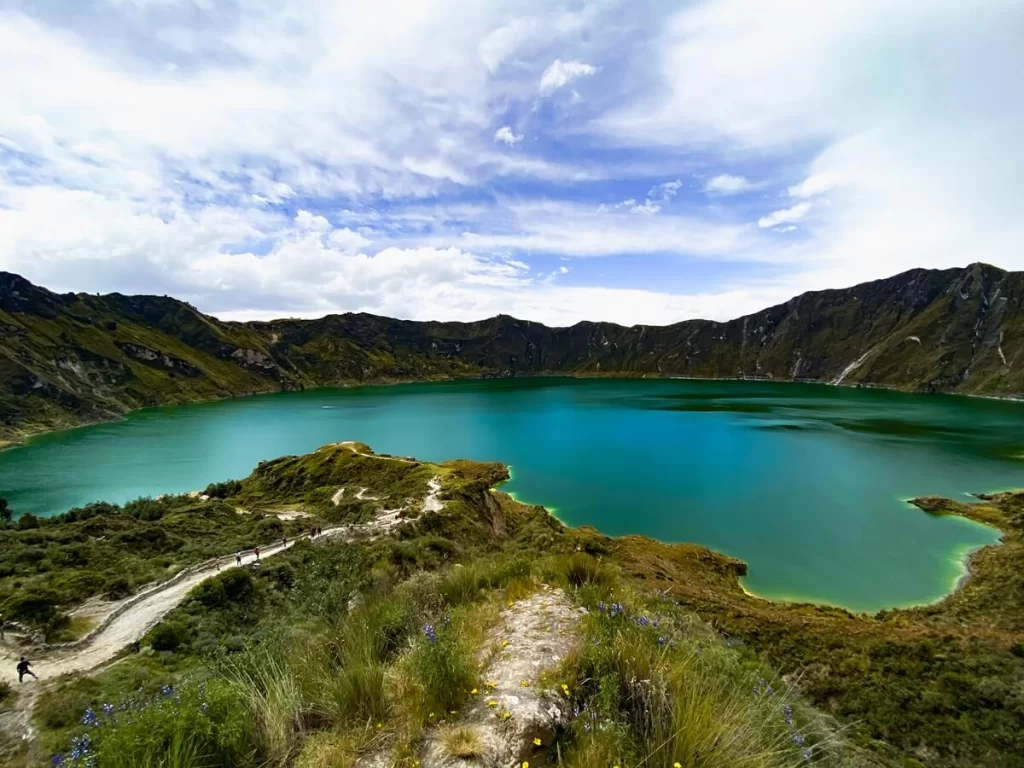
About Quilotoa Lake in Ecuador
Located to the south-west of Quito, to the west of the city of Latacunga, is the stunning Quilotoa Lake (Laguna Quilotoa). Quilotoa is the westernmost volcano in the Ecuadorian Andes. It has a beautiful 3 km wide caldera lake which attracts visitors from all over the world. The crater was formed after a volcanic eruption in 1280. The volcano has been dormant ever since.
Quilotoa lake has a beautiful green and turquoise colour which comes from the dissolved volcanic minerals from its past eruptions. It is about 250 m deep, although the level of the lake has been slowly declining. The highest point along the crater is 3,914 m (12,841 ft), and the tiny town of Quilotoa is around 3,850 m (12,631 ft).
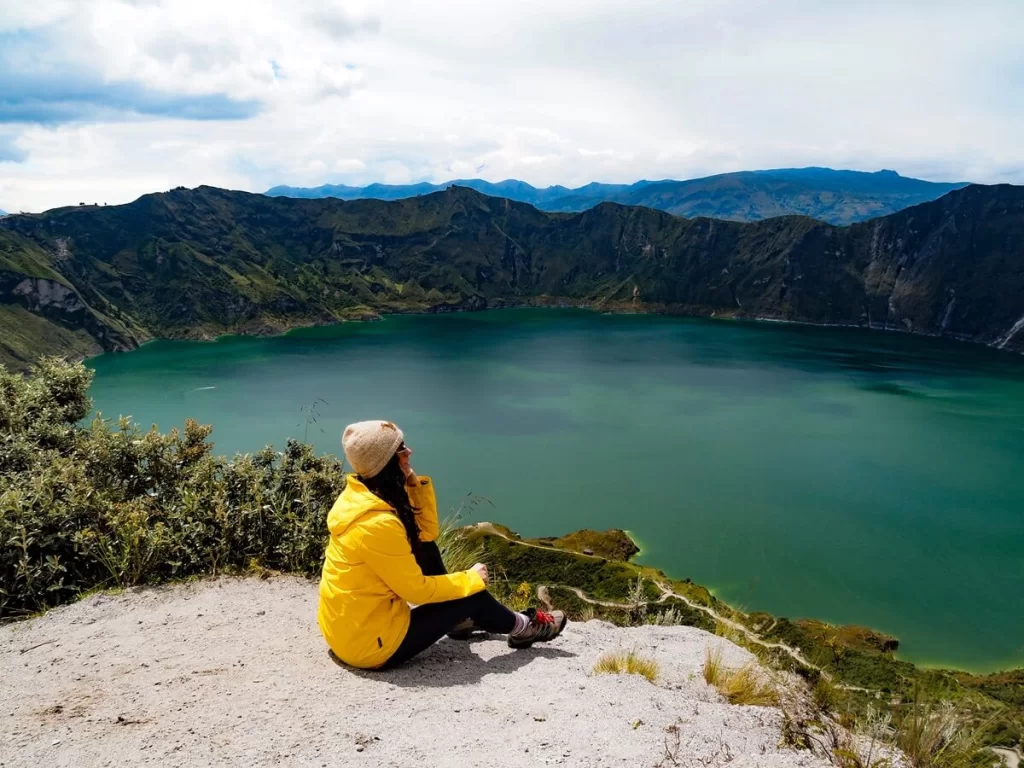
How to Plan a Trip to Quilotoa Lake in Ecuador
Depending on how long you spend in Ecuador and how much you enjoy hiking, you have the option to visit Quilotoa Lake as a day trip, multi-day trip or multi-day hike.
Day Trip to Quilotoa Lake
In case you don’t have too much time or you don’t fancy hiking a lot, then a day trip is the best option for you. There are multiple places you can take a day trip to Quilotoa Lake from.
Quito. The most popular place to visit Quilotoa Lake from is Quito, as it’s located about a 3 hour drive to the south-west of the capital. If you’re on a day trip from Quito, you’ll most likely only be able to do the hike down to the shore of the lagoon. Day-tours normally also include a few extra stops at viewpoints, markets and other places along the way. You can check out this day tour from Quito.
Baños. A less popular place to take a day trip to Quilotoa Lake from is Baños. The lagoon is located about the same distance from Baños as it is from Quito. We actually took a day trip from here, and ended up having a private tour. This was great because we could have slightly more control over the day and weren’t stuck in a big group. You can check out this day tour from Baños.
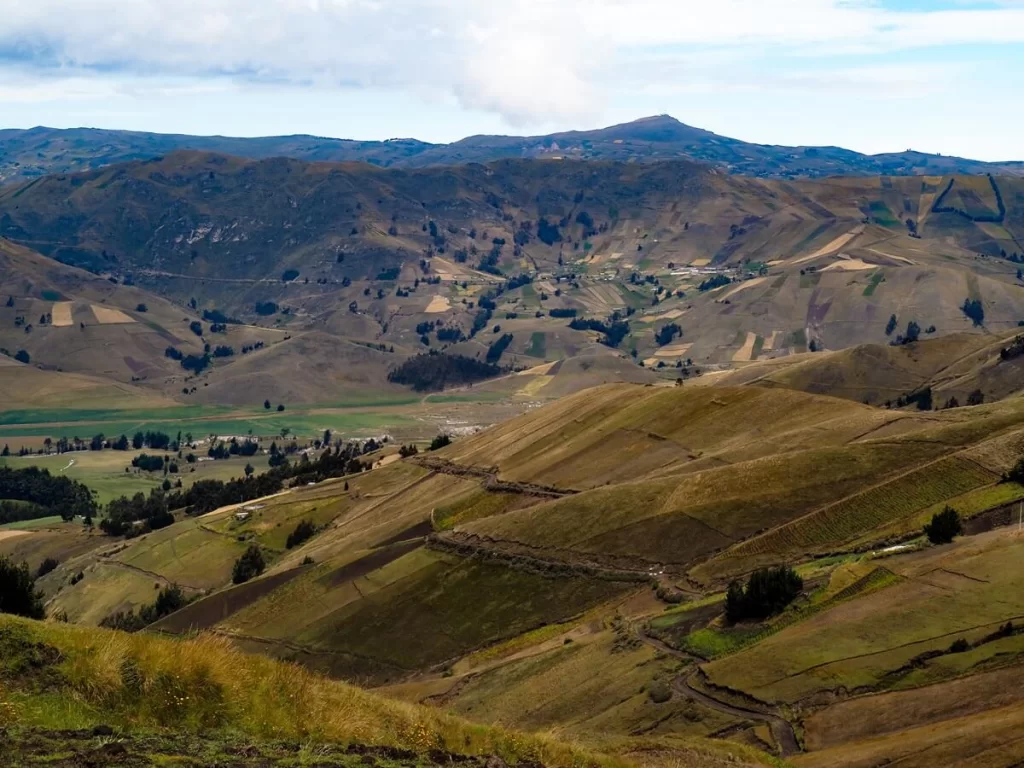
Multi-Day Trip or Hike to Quilotoa Lake
For those who enjoy hiking and would be able to fit a multi-day adventure into their Ecuador itinerary, a 2-3 day trip to Quilotoa Lake is perfect.
By planning on staying in the area for a few nights, you’ll get to experience this part of the country a bit more than you would on a day trip. During your multi-day adventure you can complete the Quilotoa Loop, which takes you through multiple remote villages, starting from Sigchos and finishing in Quilotoa. This is actually similar to what we did in the Sacred Valley in Peru.
If this multi-day hike sounds like a lot of effort then you can always just base yourself in Latacunga, explore the city, and then visit Quilotoa Lake from there. This is great if you can only allow for an overnight stay in the area before heading to other destinations such as Cotopaxi National Park or Baños. If you still want to do some hiking, then this itinerary is perfect for completing the Quilotoa Lake rim hike. We’ll go into a bit more detail on these hikes in the sections below.
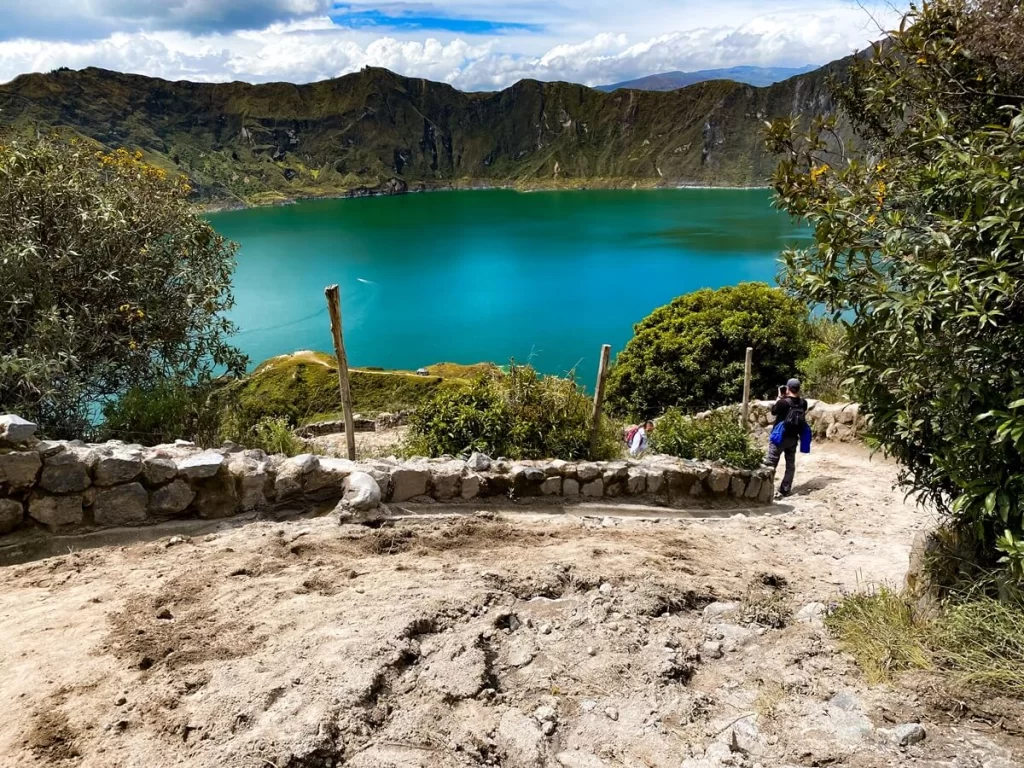
Hikes Around Quilotoa Lake
There are a few different hikes you can complete around Quilotoa Lake, some of which we’ve already briefly mentioned above. You can check out our AllTrails map, which details three popular routes as follows:
- Quilotoa Lake descent hike – red route;
- Quilotoa Lake perimeter hike – green route; and
- Quilotoa Loop – purple route.
1. Quilotoa Lake Descent Hike (A Popular Hike for Those on a Day Trip)
A popular hiking option for those visiting on a day trip is to hike down to the shore of the lake from Quilotoa village. It’s a 3.5 km (2.2 mi) out-and-back trail with about 350 m of elevation gain.
Don’t be fooled by the short length of this trail though. It is actually quite a challenging hike for a few reasons. Firstly, the trail is very steep and also slippery. If you have knee problems, you might struggle with the descent. Although, we did see some visitors walking down in small heels. I need to know their secret of how they don’t twist an ankle!
Of course, the way down is just one of the challenges. You’ll have to climb back up that same steep hill. Again, that’s not the easiest thing to do at around 3,800 m above sea level. If you think you would struggle with the uphill, you can always rent a mule to take you back up.
Once you’ve reached Playita you can just enjoy your surroundings or rent a kayak for a fun activity on the lake.
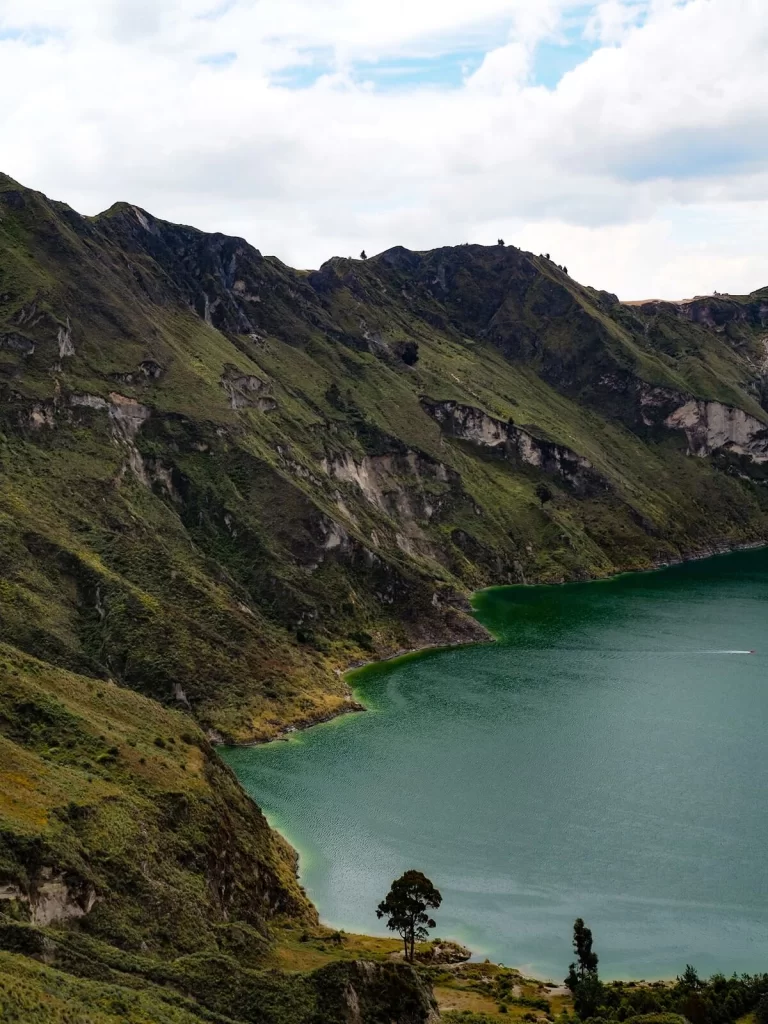
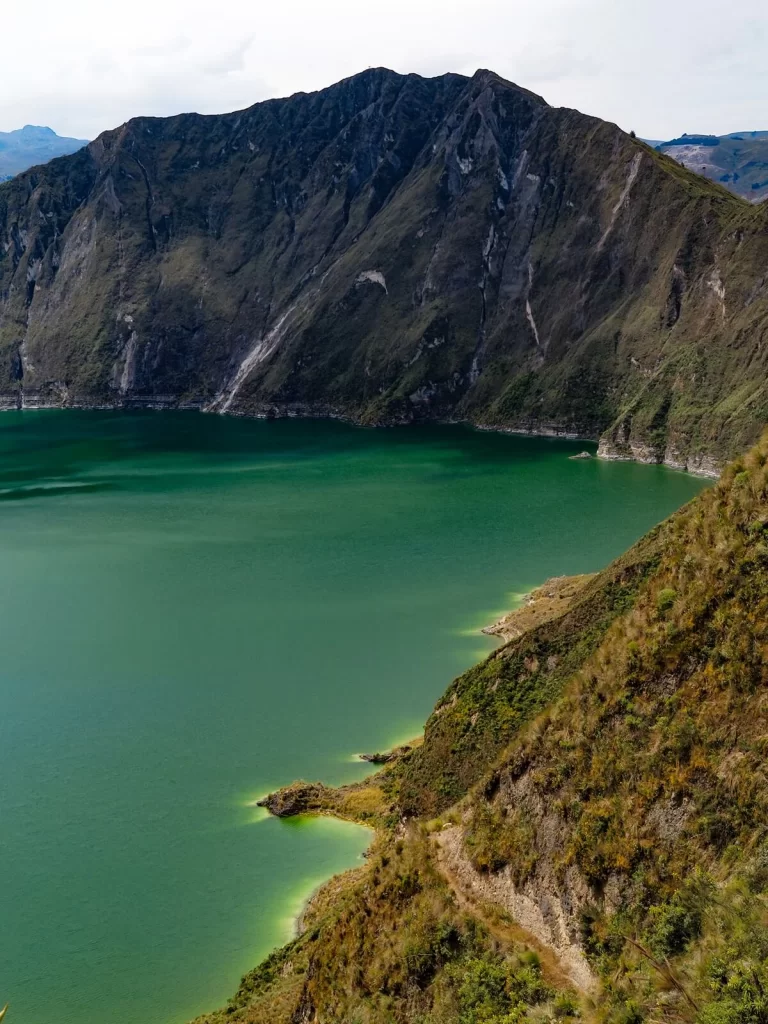
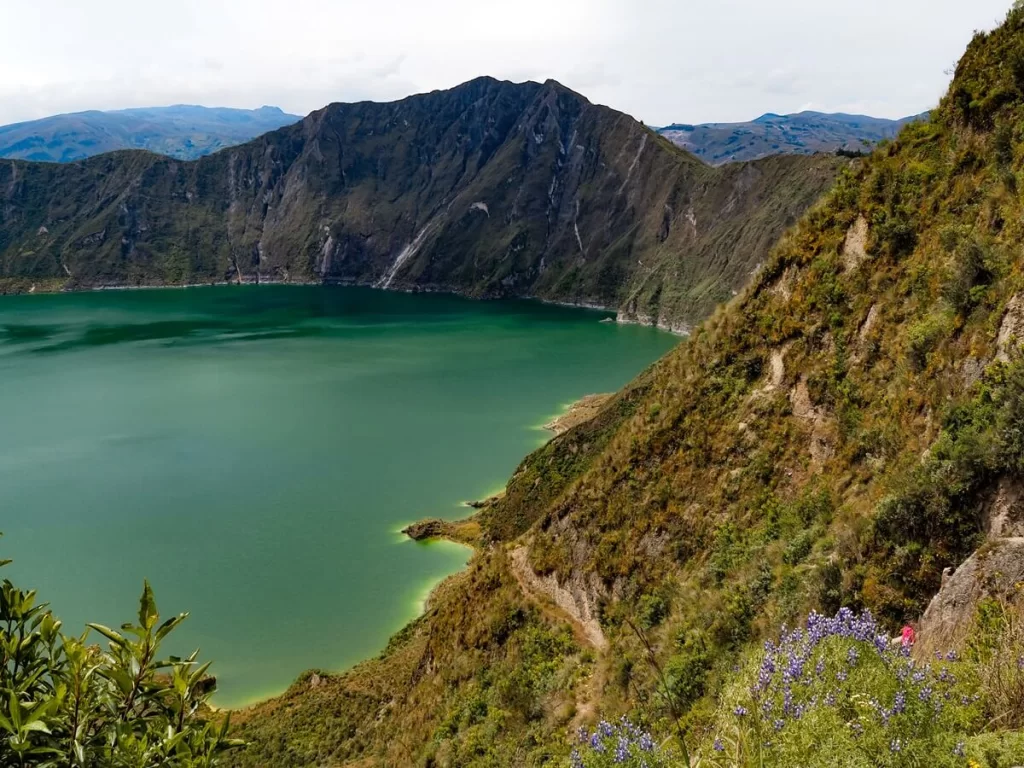
2. Quilotoa Lake Rim Hike (A Great Hike for Those on a Multi-Day Trip)
If you decide to do a DIY multi-day trip to Quilotoa Lake, then you’ll have the chance to hike along the crater’s rim. Since this trail is nearly 11 km (7 mi) long, you would need to dedicate most of the day to completing it.
You can stay in Latacunga and take a bus from there to Quilotoa village early in the morning. Depending on when you’re visiting, it’s always best to start your hike early, as clouds can roll in later on and you might end up hiking without any views.
The trail is very up and down and can be challenging for some. You’ll have gained around 550 m of elevation by the end.

3. Quilotoa Loop (The Best Multi-Day Self-Guided Hike in Ecuador)
The Quilotoa Loop is a well-known multi-day self-guided hike in Ecuador. The nearly 40 km (25 mi) long trek connects remote villages in the Andes such as Sigchos, Isinlivi, Chugchilan, and Quilotoa.
On average, hikers complete the Quilotoa Loop in about 3 days. You can always extend it by a day or two if you find the trek difficult. Or you can make it shorter by starting in Isinlivi. The trail will take you through valleys, along rivers, and up mountains and you can really enjoy the remoteness of being in the Ecuadorian countryside. You’ll be hiking between 2,800 m and 3,900 m and will have a lot of descents and ascents. At the end, your reward will be Quilotoa Lake, one of the most beautiful crater lakes in the country.
To get to the trailhead, you would first need to travel to Latacunga from where you can take a local bus to Sigchos. You can leave your big bag at your accommodation in Latacunga, as most hotels and hostels will offer this service at an affordable price. We had a similar arrangement when we hiked the Valbona Pass in the Albanian Alps. Then, once you’ve reached Quilotoa village, you can just take a local bus back to Latacunga.
Entry Fee to Quilotoa Lake
It’s worth noting that you will have to pay a $2 USD entry fee to the village of Quilotoa. If you’re on a tour, then this might be included in the price, but it’s worth confirming when you’re booking.
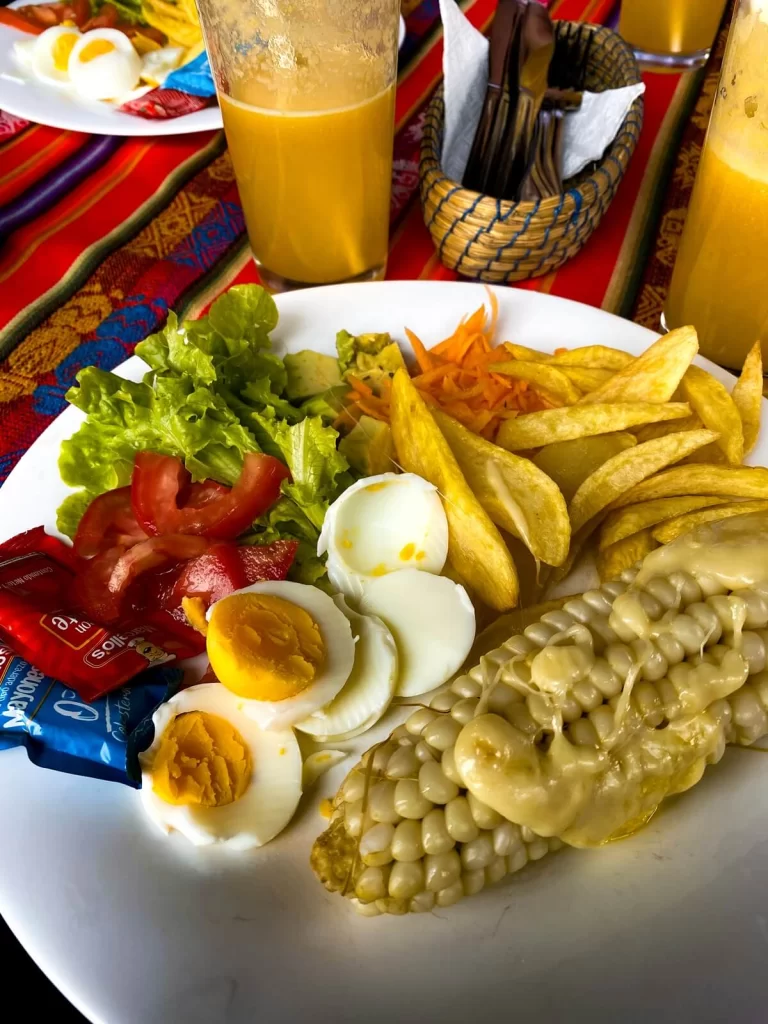

Where to Eat on Your Trip to Quilotoa Lake
If you’re visiting with a day-tour, then we highly recommend reading about what’s included in your package. Many tours will stop for breakfast en-route to Quilotoa, but this breakfast is hardly ever included in the price. More often than not you will only get lunch included, but it’s worth double checking before your trip.
If you’re on a multi-day adventure, then we recommend booking an accommodation with breakfast included. There are plenty of places to eat in Latacunga if you’re staying there to visit Quilotoa Lake. You can find a few local places offering food in the village of Quilotoa too.
If you’re hiking the Quilotoa Loop, then you can book accommodations that offer breakfast and dinner. In addition, you can usually also pay extra for the place to prepare you a packed lunch, so all three meals will be sorted for you. We recommend coming prepared with some additional healthy snacks that you can consume over the course of your multi-day hike though. In terms of drinking water, we recommend investing in a filtered water-bottle to reduce your plastic waste. You can buy bigger bottles of water in the small villages to cut down on using lots of small plastic bottles too.
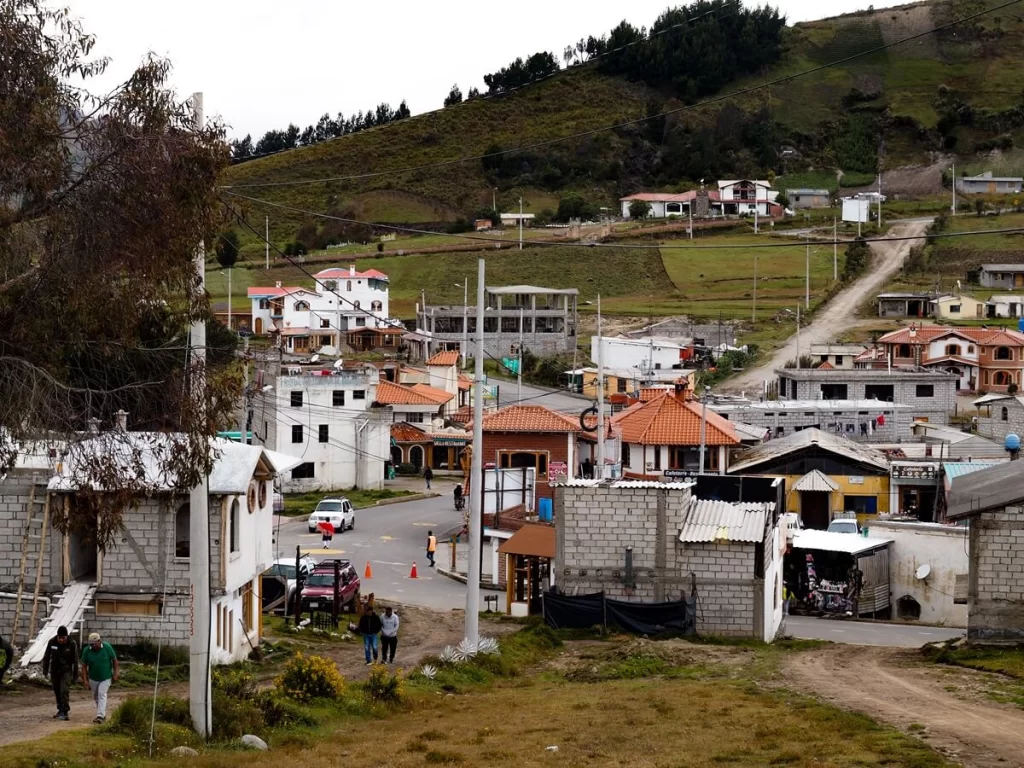
Where to Stay on Your Trip to Quilotoa Lake
If you’re visiting on a day trip, then of course you’ll be back at your original destination by the evening. However, if you’re planning to do a multi-day trip, then you can base yourself in Latacunga.
For those wanting to complete the Quilotoa Loop, we recommend booking a night in the main villages along the trek. Most hikers spend the night before their first hiking day in Latacunga, which is easy to get to from Quito. It is a much bigger place, which means you’ll have more options to eat and buy snacks for the upcoming hike. You can always store your luggage here and then pick it up when you return from Quilotoa. Then you can spend the next few nights in Isinlivi, Chugchilan and Quilotoa.
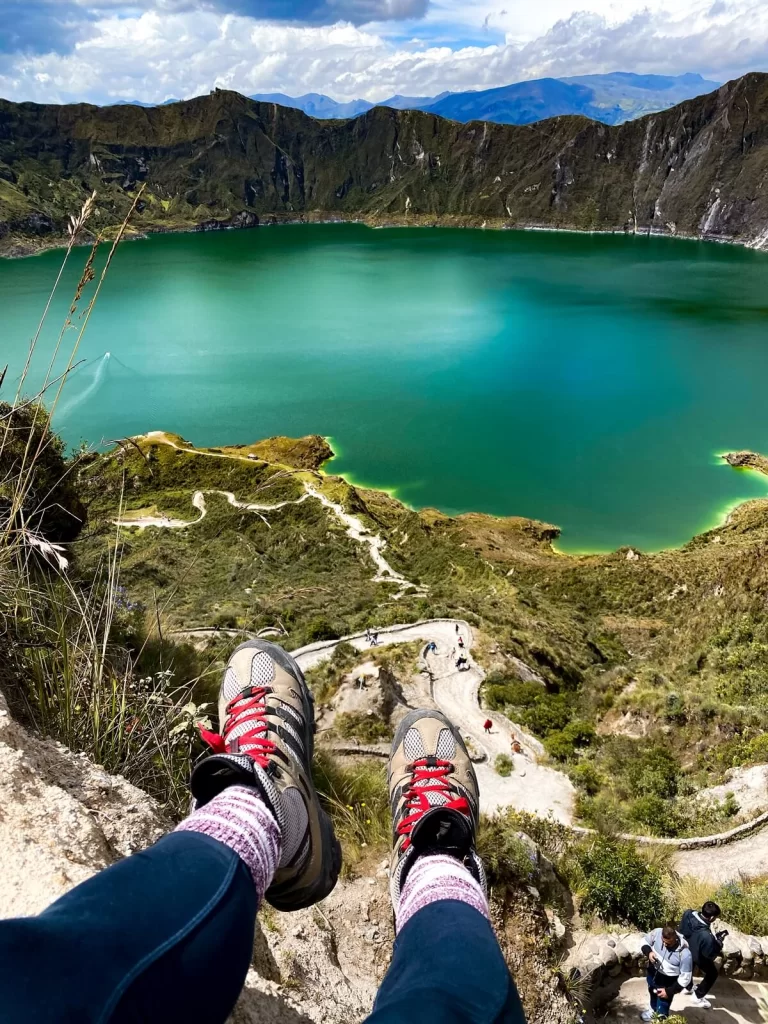

How To Avoid Altitude Sickness at Quilotoa Lake
Whether you’re just visiting with a day-tour or completing the Quilotoa Loop, you’ll be at high altitude. If you’re planning on taking a day-trip from Quito, we recommend spending a few days there to acclimatise before visiting Quilotoa Lake.
To be honest, if you spend a few days in Quito, which is already at 2,800 m (9,186 ft) above sea level, then you’ll most likely be fine.
If you want to hike the Quilotoa Loop, then we suggest visiting places such as the TeleferiQo in Quito or Cotopaxi National Park first, to get used to being way above 3,500 m (11,482 ft).
Final Thoughts on a Trip to Quilotoa Lake in Ecuador
Whilst we would’ve loved to visit Quilotoa Lake on a multi-day adventure, we’re still happy that we decided to visit on a day trip from Baños. The lake was just as beautiful as we’d seen it on photos beforehand, so overall it was totally worth the long time spent in the car to get there. Having a private tour gave us the chance to have a bit more control over the day, but also to get to know our guides and learn a bit more about Ecuador.
Have you ever visited Quilotoa Lake in Ecuador? If you did, did you take a day trip or multi-day trip to Quilotoa Lake? If not, would you visit this beautiful crater lake in Ecuador? Let us know in the comments below.
Now, let your adventure begin,

Our Top Travel Resources
Accommodation: For hotels we always use Booking.com and Hostelworld for hostels. We also book longer stays on Airbnb or Vrbo.
Flights: To find the best flight prices we always check Skyscanner, Google Flights or WayAway. Then we also check the airlines’ websites too for comparison.
Car Rentals: We use Discover Cars when we want to rent a car as it compares local, national and international companies.
Activities: If we book organised tours we always check either GetYourGuide or Viator.
Foreign Currency: Whenever we can we prefer to pay in local currency and for that we always use our Wise card. We can easily withdraw money from the ATM or pay by card at most shops and restaurants.
Travel Insurance: We never go anywhere without travel insurance. You never know what will happen on your trip, so good travel insurance like SafetyWing can protect you in case of injury, illness, theft and cancellations.
eSIM and VPN: To get data abroad we use Airalo which is an app that allows you to download a prepaid eSIM to your phone in over 190 countries. Make sure to have a VPN to avoid hackers accessing your personal data when using public WIFI. We use Surfshark which is the only VPN that offers one account on unlimited devices.

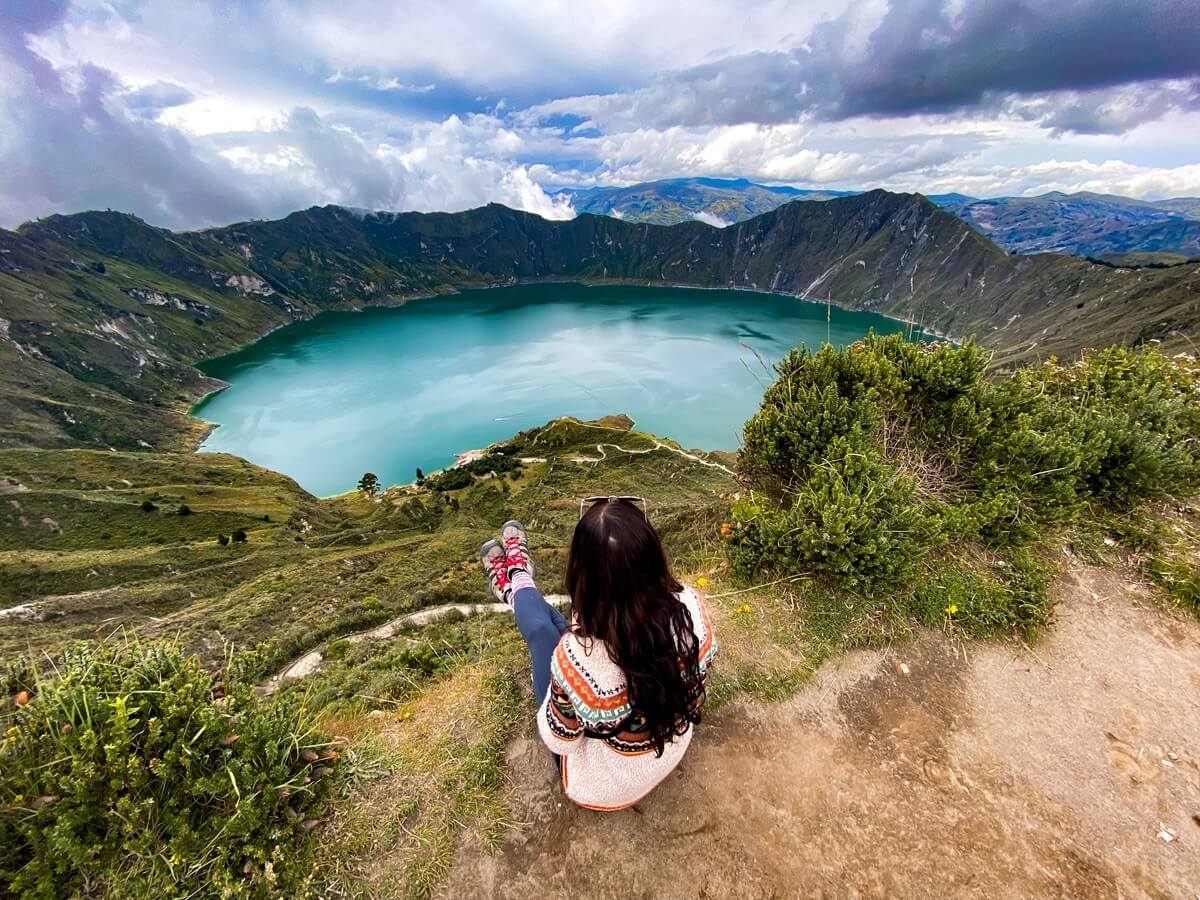

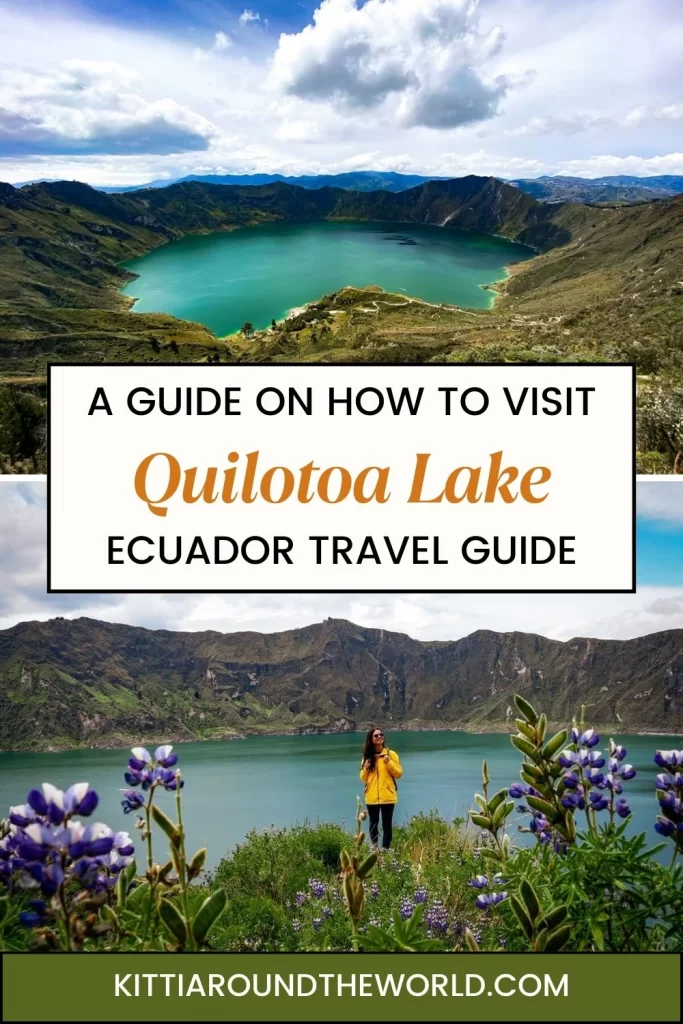

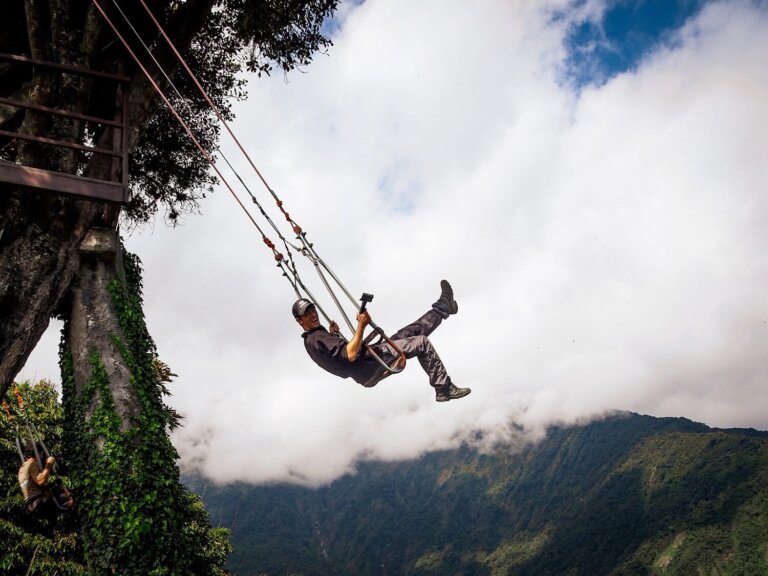
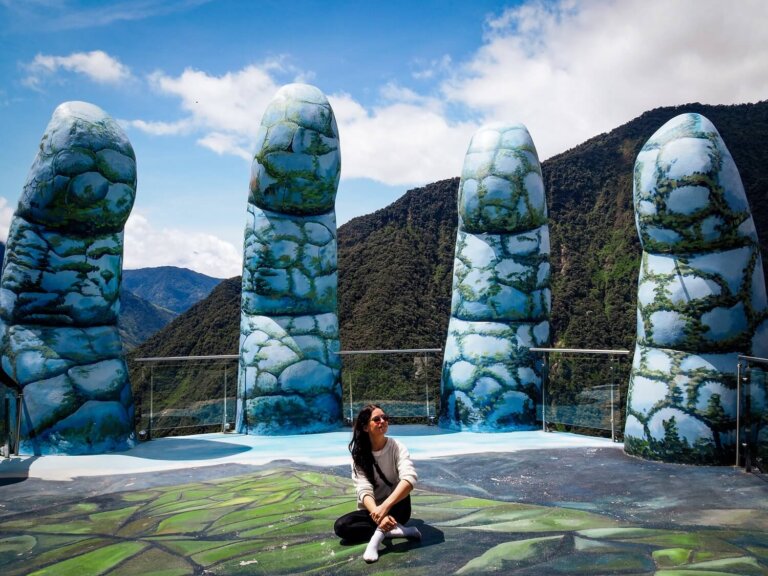
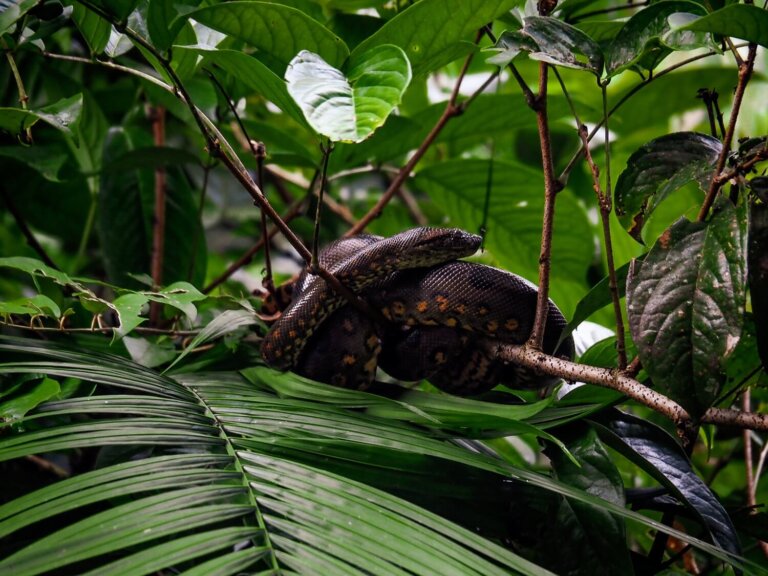


loads of info! and great photos! beautiful lake too. 😍
Thank you Karan, Quilotoa is a fantastic place.